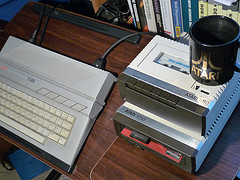
For a while, in the 1990s and early 2000s, the computing landscape was simple: Everyone used Windows. The Windows PC had become the dominant computer, supplanting the myriad platforms of the 80s: Acorn, Amiga, Atari, Commodore, Sinclair and others, which caused everyone no end of headaches with incompatibilities. Developers had to choose which platforms to support, as there were too many to support them all, and consumers were left with a difficult choice about which to buy, and often ended up regretting their decisions.
This article by Ben Werdmuller reminds us that we may now be entering a similar age of chaos. We have Windows, OSX and Linux on the desktop, HTML5, Flash and Silverlight in the browser, and Android, Blackberry, iPhone OS, Symbian (Nokia’s platform), Windows Mobile, and many others on the smartphone, not to mention new devices like the iPad or Microsoft Surface and new operating systems like Google’s Chrome Web OS. Ben argues that the most likely outcome is to standardize on the Web, regardless of device, as we did on Windows in the 80s.
Myself, I’m not so sure, at least not until we have web standards for features like multi-touch, location awareness and 3D navigation. But it’s certainly true that we now face those same difficult choices as consumers or developers that we did in the ’80s.
Read the full article






 @
@ Tags:
Tags: 









 Like all images on the site, the topic icons are based on images used under Creative Commons or in the public domain. Originals can be found from the following links. Thanks to
Like all images on the site, the topic icons are based on images used under Creative Commons or in the public domain. Originals can be found from the following links. Thanks to